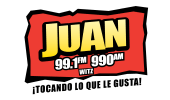Patoka Sportsman 11-3-18
Patoka Sportsman 11-3 & 11-4-18
Wildlife Manager, Kalli Dunn, is seeking help from the hunting public to help with Chronic Wasting Disease (CWD) surveillance. Kalli will require collecting lymph nodes from the neck of the deer. If you are willing to let Kalli sample your deer, during any of the deer seasons, please contact her within 24 hours of the kill. Chronic Wasting Disease is more likely evident in older deer. Therefore, she only wants deer that are 1.5 years and older. Keep deer cool (but not frozen) or remove head below “Adam’s apple”. Kalli will come to you to collect the sample or arrangements can be made to meet at the Glendale F & W Area office. If you plan to head or shoulder mount your deer it is not a candidate for this collection due to the damage caused to the neck.
Kalli’s contact information:
Kalli Dunn
Glendale Fish and Wildlife Area
Office (7am – 2pm): 812-644-7711
Select Indiana state parks will close for four days in the coming weeks to allow for controlled deer reductions. The dates for the temporary closings are Nov. 12-13, and Nov. 26-27. Local parks that this affects are Brown County State Park, Harmonie State Park and Lincoln State park.
Hunters can check in their game online through the CheckIN Game system, in the Fish & Wildlife Online Services application, at an on-site check station, or by phone. The online CheckIN Game system and the Fish & Wildlife Online Services can be used with any Internet-connected device. Both of these options are free, and you don’t need to set up an account online to check in your game. You can purchases licenses, check in game, view your check-in history, get your HIP number, purchase a gift certificate or make a donation through your account. The phone-in option (1-800-419-1326) carries a $3 fee (Visa or Mastercard only). Even at on-site check stations, station managers will enter information online through the CheckIN Game System. Stations no longer use paper log books or issue metal tags.
Call TIP if you see, hear or learn about poaching or another fish-and-wildlife rule violation. If your “TIP” leads to an arrest, you may receive as much as a $200 reward, and you can remain anonymous. Call 1-800-TIP-IDNR, 24 hours a day, 7 days a week.
The annual Hunters for the Hungry program administered by the Dubois County Sportsmen’s Club is going on now through the end of deer season in January. Any hunter who harvests a deer can donate it to the Hunters for the Hungry by taking it to Sanders Processing in Celestine, Ferdinand Processing, Cannelburg Processing or Ohio Valley Custom Deer Processing in English. Processing will be paid for through a grant from the Sportsmen’s Benevolence Fund acquired by the Dubois County Sportsmen’s Club. All donated deer meat is packaged and distributed through area food banks. Each donated deer will give the hunter an entry to win a gun donated by Dr. Greg Gordon and Jasper Optical Lab.
One of our processors had to turn away two potential donated deer last week because the meat was spoiled. The deer was shot the night before and wasn’t found until the next morning. Overnight temperatures were very mild and the meat was spoiled by the time the deer was found. I did some research and found some tips that will help you if this situation comes up.
By Dr. Phillip Bishop
Spoilage is excessive deterioration of meat as a result of bacteria, molds and yeasts. When the population of these ever-present microorganisms grows large enough, the meat is spoiled.
A deer’s living temperature at rest is about 101 F. Deer, like hunters, heat up if they use their muscles more, so a deer’s temperature at the time of death depends on what it was doing just beforehand.
The ideal temperature for bacterial growth is between 70 and 120 degrees. Under ideal conditions, bacteria can double about every 20 minutes. Therefore, the whole time the dead deer’s meat is above 70 degrees, microorganisms are multiplying rapidly, a condition that only diminishes a bit from 70 down to 40 degrees. After meat temperature falls to 40, bacteria reproduction drops drastically. Meat (not air) temperatures between 30 and 40 are the perfect temperature for fresh meat refrigeration.
Any time the environmental temperature is 40 F or warmer, spoilage is a major concern. Keep in mind that insulators will hold the meat temperature higher, longer. For example, most of the time, a deer that is left on the ground will spoil more rapidly than a deer that is hung from a meat pole and exposed to air. The only exception would be in weather conditions wherein the ground is very cold compared to the air temperature.
The rapid multiplication of microorganisms, which we call decay or spoilage, doesn’t commence until after death. Healthy, living animals have intact immune systems which keep harmful micro-organisms in check. Sick or infected animals are unable to keep these harmful bacteria, viruses, yeasts and molds at safe levels.
Ironically, when we shoot a deer and don’t recover it immediately, it is better for the meat if the animal lives as long as possible because this results in a shorter time the carcass will spend growing bacteria at a high rate. Although ethically we ought to do everything in our power to achieve a quick and merciful kill, systemic spoilage only begins once the animal dies.
After the animal expires, the spoiling microorganisms begin their unhindered multiplication. Because these spoiling organisms multiply most rapidly in warm, wet environments, the longer meat is held to these conditions, the more rapid the rate of decomposition.
Deer intestines are a reservoir of bacteria. If the intestines are damaged by an arrow or bullet, the bacteria will leave the enclosing barrier of the intestines and fill the gut, hastening spoilage.
Keep in mind, too, that simply recovering a deer doesn’t stop spoilage. The more rapidly the organs and the blood can be removed, the faster the hide is removed, and the faster the meat is cooled, the better the meat will be.
So, the conditions of the environment and the deer both help determine the time between shot and recovery without spoiling venison. If the air temperature is 50 degrees, we have three to six hours to recover a deer after it dies. If the temperature is higher, or the animal has elevated its temperature by running hard, then the safe time available for recovery is shorter.
Keep in mind that it is not the temperature at the time you shoot the deer that matters; it’s the expected temperature experienced by the carcass that matters. So if you shoot a deer at 50 degrees, but the skies are clear and you expect the temperature to fall into the high 20s that night, your deer is safer than if the temperature is 45, it’s cloudy with an approaching warm front and the night temperatures are going to stay above 40.
So, do we go after our deer in the dark, or wait until morning? We need to ask ourselves a few key questions. Where was the deer hit? A double-lung shot means the deer dies quicker and might be easier to find.
However, if you don’t find the deer quickly, and you are sure you got a good chest hit, then spoilage commences as soon as the deer dies. If the shot accidentally hits the deer in the gut, the deer is likely to survive a while, delaying the onset of bacterial multiplication, but it is likely going to be hard to recover. In this case, unless it is very warm, it seems waiting for light is the best option. If the temperature is 40 F or higher, we have little choice and need to make an effort to find the deer as soon as possible.
In that scenario, the wisest approach would be to give the deer one to two hours and then begin the search. We need to use the waiting time to get organized, get help and get the proper equipment, including several strong lights, something to mark the trail, and a coordinated search plan for us and our helpers.
After we recover a deer, we need to get it as cool as quickly as we can. This means getting the organs out quickly, keeping the intestines intact (don’t spill the bacteria), spreading the chest and abdomen open, and getting the carcass off the ground. The hide and hair are good insulators, so get them off as quickly as feasible. Keep the carcass as clean as possible so as not to introduce more bacteria to those already present.
The smaller the pieces of meat, the faster it cools. Use whatever means available to cool the venison. If ice or ice water is available, use these to cool the carcass. Ice water cools more effectively than un-melted ice because the un-melted ice has air pockets that insulate the meat and slow down the cooling process. I hope these tips help you if you’re ever put into this situation. As a hunter myself I’ve been in this position and know how difficult it is when shooting a deer in the evening and not finding it until morning. A general rule of thumb is if the overnight temperature is not going to be below 40 degrees I don’t hunt in the evening especially during bow season. I think it’s a good rule to follow.




